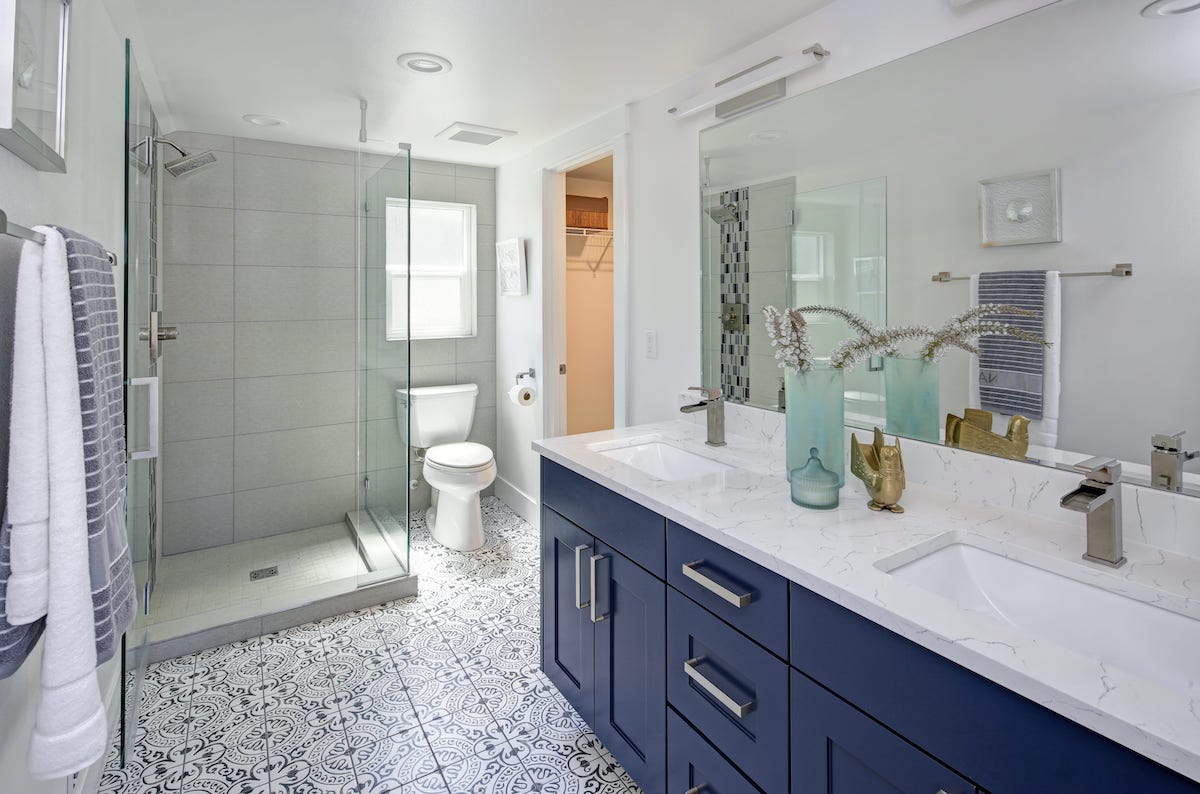Bathroom design has come a long way in recent years, and one of the latest trends that has been gaining popularity is the wet room vanity unit. This innovative design takes the traditional bathroom vanity to a whole new level, offering a modern and stylish look that is perfect for any bathroom.
Unlike traditional vanities, wet room vanity units are designed to be completely waterproof, making them ideal for use in wet areas such as showers and baths. They are also highly versatile, offering a variety of storage options and configurations that can be customised to suit your needs. If you're looking to update your bathroom and add a touch of modern style and functionality, then a wet room vanity unit may be just what you need. In this article, we'll take a closer look at this exciting trend and explore some of the benefits and features of wet room vanity units.
Benefits
Wet room vanity units offer several benefits over traditional bathroom vanities. One of the most significant advantages is their ability to withstand exposure to water, making them ideal for use in wet areas such as showers and baths. Unlike traditional vanities, which can become damaged and warped over time due to exposure to moisture, wet room vanity units are completely waterproof and resistant to damage from water. Another benefit of wet room vanity units is their versatility. They can be configured in a variety of different ways, allowing you to customise the unit to suit your specific needs and preferences. For example, you can choose from a range of different storage options, including drawers, cabinets, and open shelves, to create a unit that provides the storage space you need while still maintaining a sleek and modern look.
Wet room vanity units also offer a contemporary and stylish look that can help to transform your bathroom into a modern and inviting space. They are available in a range of materials, colours, and styles, making it easy to find a unit that complements your existing bathroom decor and enhances the overall look and feel of your space.
The installation process for a wet room vanity unit will depend on the specific design and materials you choose. However, in general, the process will involve mounting the unit to the wall or floor and connecting the plumbing and electrical systems as needed. If you're installing a floating vanity, then the first step will be to mount the unit to the wall using brackets or other hardware. Once the unit is securely mounted, you can then connect the plumbing and electrical systems as needed.
If you're installing a freestanding vanity, then the installation process will be similar to that of a traditional bathroom vanity. You'll need to place the unit in the desired location and connect the plumbing and electrical systems as needed. It's important to work with a professional installer or contractor when installing a wet room vanity unit to ensure that the unit is installed correctly and safely. A professional installer can also help you to choose the right materials and design for your specific needs and preferences.
Maintenance
Maintaining and cleaning your wet room vanity unit is important to ensure that it remains in good condition and continues to look great over time. The specific maintenance and cleaning requirements will depend on the materials and design of your unit, but there are some general tips that can help.
First, it's important to clean your vanity unit regularly to prevent the buildup of dirt and grime. Use a mild cleaning solution and a soft cloth to wipe down the unit, taking care to avoid using abrasive cleaners or materials that could scratch or damage the surface of the unit. If your vanity unit is made of wood, then it's important to avoid exposing it to excessive moisture, as this can cause the wood to warp and become damaged over time. Use a waterproof sealant to protect the wood and prevent moisture from penetrating the surface.
Cost
The cost of a wet room vanity unit will depend on a variety of factors, including the materials, design, and installation costs. In general, wet room vanity units tend to be more expensive than traditional bathroom vanities due to their waterproof design and customizability. However, the cost can vary depending on the specific materials and design you choose.
Wooden units tend to be less expensive than glass or metal units, for example, while floating vanities may be more expensive than freestanding units due to the additional hardware and installation requirements. It's important to consider your budget and your specific needs and preferences when choosing a wet room vanity unit. A professional installer or contractor can help you to choose the right materials and design for your budget and ensure that your unit is installed correctly and safely.










